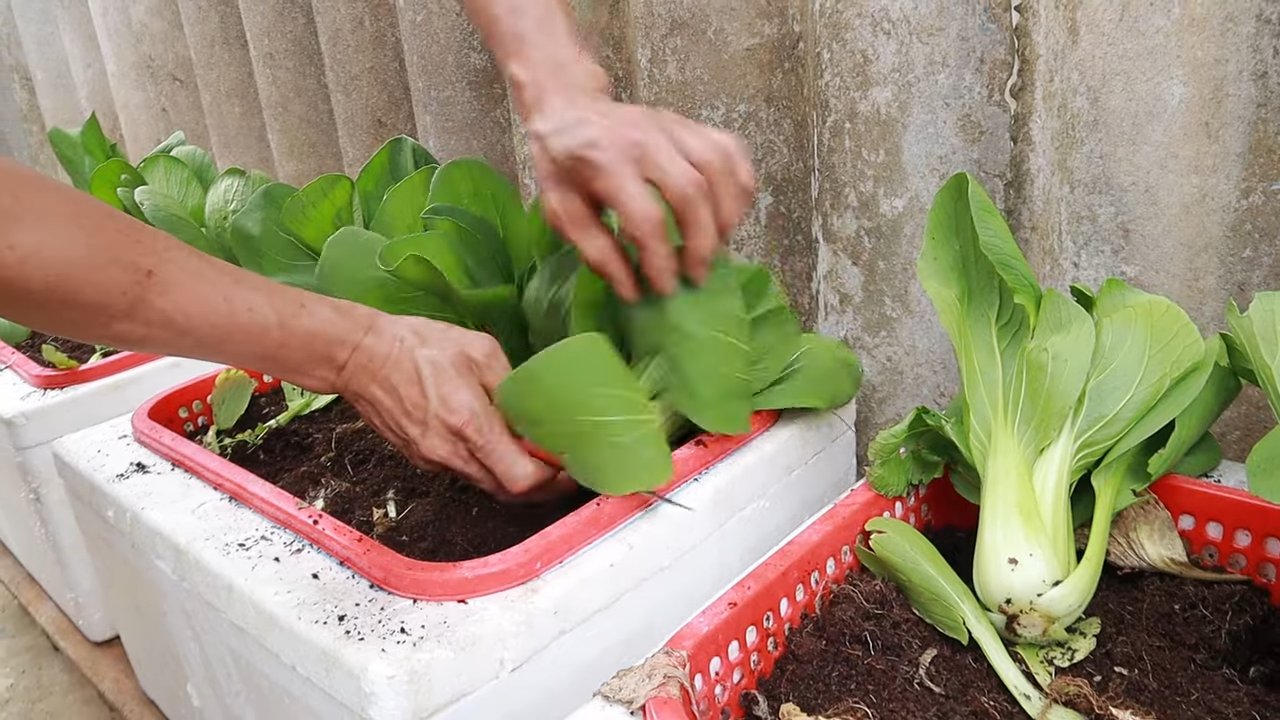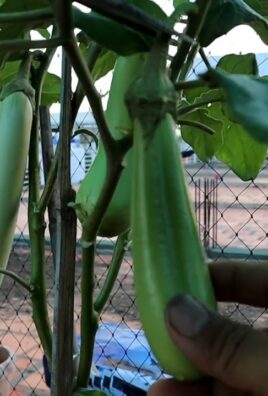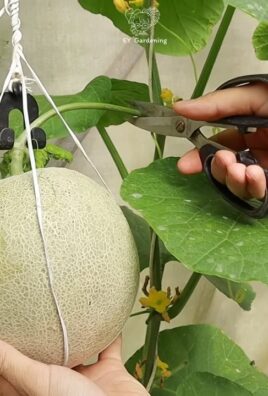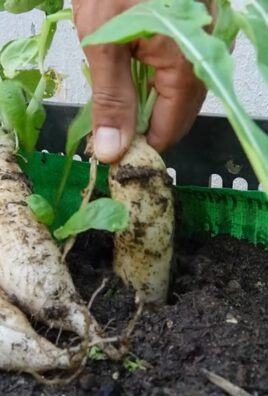Grow Bok Choy Kitchen: Imagine stepping into your kitchen, not just to cook, but to harvest fresh, crisp bok choy right from your windowsill! Sounds dreamy, doesn’t it? For centuries, cultivating food close to home has been a cornerstone of various cultures, from ancient Chinese gardens to medieval European kitchen plots. This deep-rooted connection to homegrown goodness is experiencing a vibrant resurgence, and I’m thrilled to share some simple DIY tricks to help you participate, even if you have limited space.
Why should you learn how to grow bok choy kitchen style? Well, store-bought vegetables can sometimes lack that vibrant freshness and flavor. Plus, there’s something incredibly satisfying about nurturing a plant from seed to harvest. This article is packed with easy-to-follow instructions and clever hacks that will empower you to cultivate your own mini bok choy garden indoors. We’ll cover everything from choosing the right containers to optimizing sunlight and watering techniques. Get ready to enjoy delicious, homegrown bok choy in your stir-fries, soups, and salads – all thanks to a little DIY magic!

Growing Bok Choy Indoors: From Kitchen Scraps to Fresh Greens!
Hey there, fellow plant enthusiasts! Ever thought about turning your kitchen scraps into a thriving little garden? Well, today, I’m going to show you how to regrow Bok Choy from the leftover base you’d normally toss in the compost. It’s a super easy and rewarding project, perfect for beginners and seasoned gardeners alike. Get ready to enjoy fresh, homegrown Bok Choy right from your kitchen!
What You’ll Need
Before we dive in, let’s gather our supplies. This is a pretty low-key project, so you probably already have most of these things lying around:
* Bok Choy base (the part you usually cut off and discard)
* A shallow dish or bowl
* Water (tap water is fine)
* A sunny windowsill or grow light
* Potting soil
* A small pot (4-6 inches in diameter is ideal)
* Optional: Liquid fertilizer
Phase 1: Rooting Your Bok Choy Base
This is where the magic begins! We’re going to coax those dormant cells in the Bok Choy base to start growing roots. It’s like giving your veggie a second chance at life!
1. Prepare the Base: After you’ve used the leafy part of your Bok Choy for a stir-fry or salad, don’t throw away the base! Trim it a little, removing any wilted or brown outer leaves. You want a clean, firm base to work with.
2. Place in Water: Fill your shallow dish or bowl with about an inch of water. Place the Bok Choy base in the water, cut-side up. Make sure the water level only covers the bottom inch or so of the base. You don’t want to submerge the entire thing, as that can lead to rot.
3. Find a Sunny Spot: Place the dish on a sunny windowsill where it will receive plenty of indirect sunlight. A south-facing window is usually best, but an east or west-facing window will also work. If you don’t have a sunny windowsill, you can use a grow light. Position the light a few inches above the Bok Choy base.
4. Change the Water Regularly: This is crucial! Change the water every day or two to prevent bacteria from growing and to keep the water fresh. This will encourage healthy root development. I usually just dump out the old water, rinse the dish, and refill it with fresh water.
5. Be Patient: It usually takes about 3-5 days for roots to start appearing. You’ll see small, white roots emerging from the bottom of the base. Don’t get discouraged if it takes a little longer; just keep changing the water and providing sunlight.
Phase 2: Planting Your Rooted Bok Choy
Once your Bok Choy base has developed a good network of roots (about an inch or two long), it’s time to move it to a pot with soil. This is where it will really start to grow!
1. Prepare the Pot: Fill your small pot with potting soil. Make sure the pot has drainage holes at the bottom to prevent waterlogging. I like to use a good quality potting mix that’s specifically designed for vegetables.
2. Make a Hole: Use your finger or a small trowel to create a hole in the center of the pot, deep enough to accommodate the Bok Choy base and its roots.
3. Carefully Transplant: Gently remove the Bok Choy base from the water and carefully place it in the hole. Make sure the roots are spread out and not bunched up.
4. Cover with Soil: Fill the hole with soil, gently pressing down around the base of the Bok Choy. Leave the top of the base exposed; you don’t want to bury it completely.
5. Water Thoroughly: Water the soil thoroughly until water drains out of the bottom of the pot. This will help settle the soil and ensure that the roots are well-hydrated.
Phase 3: Caring for Your Growing Bok Choy
Now that your Bok Choy is planted, it’s time to provide it with the care it needs to thrive. This involves providing adequate light, water, and nutrients.
1. Light: Continue to provide your Bok Choy with plenty of sunlight. If you’re using a windowsill, rotate the pot regularly to ensure that all sides of the plant receive equal light. If you’re using a grow light, keep it positioned a few inches above the plant. Bok Choy needs at least 6 hours of sunlight per day.
2. Watering: Keep the soil consistently moist, but not soggy. Water when the top inch of soil feels dry to the touch. Avoid overwatering, as this can lead to root rot. I usually water my Bok Choy every other day, but this will depend on the temperature and humidity in your home.
3. Fertilizing (Optional): To give your Bok Choy a boost, you can fertilize it every few weeks with a liquid fertilizer. Follow the instructions on the fertilizer label. I like to use a balanced fertilizer that’s specifically designed for vegetables.
4. Temperature: Bok Choy prefers cooler temperatures, ideally between 60-70°F (15-21°C). Avoid placing your plant near heat sources, such as radiators or vents.
5. Pest Control: Keep an eye out for pests, such as aphids or spider mites. If you notice any pests, you can try spraying them with a mixture of water and dish soap. You can also purchase insecticidal soap at your local garden center.
Phase 4: Harvesting Your Bok Choy
The best part! After a few weeks of care, your Bok Choy will be ready to harvest. You can harvest the entire plant at once, or you can harvest individual leaves as needed.
1. Harvesting Individual Leaves: If you want to harvest individual leaves, simply cut them off at the base of the plant with a sharp knife or scissors. Start with the outer leaves, as these are usually the oldest and largest.
2. Harvesting the Entire Plant: If you want to harvest the entire plant, simply cut it off at the base with a sharp knife.
3. Enjoy Your Harvest: Use your homegrown Bok Choy in stir-fries, salads, soups, or any other dish you like. It’s so rewarding to enjoy fresh, homegrown vegetables that you grew yourself!
Troubleshooting Tips
Even with the best care, you might encounter a few challenges along the way. Here are some common problems and how to fix them:
* Yellowing Leaves: This can be caused by overwatering, underwatering, or a lack of nutrients. Make sure you’re watering your Bok Choy properly and fertilizing it regularly.
* Leggy Growth: This is usually caused by a lack of light. Make sure your Bok Choy is getting enough sunlight or grow light.
* Root Rot: This is caused by overwatering. Make sure your pot has drainage holes and that you’re not watering your Bok Choy too frequently.
* Pests: Keep an eye out for pests and treat them promptly.
Important Considerations
* Not a Perpetual Harvest: Keep in mind that regrowing Bok Choy from a base isn’t a perpetual harvest. You’ll likely get one or two harvests from each base.
* Bolting: Bok Choy can bolt (go to seed) if it gets too hot. If this happens, the leaves will become bitter. To prevent bolting, keep your Bok Choy in a cool location.
* Experiment: Don’t be afraid to experiment with different varieties of Bok Choy. Some varieties are easier to regrow than others.
So there you have it! Growing Bok Choy from kitchen scraps is a fun, easy, and rewarding project that anyone can do. Give it a try and enjoy fresh, homegrown greens right from your kitchen! Happy gardening!

Conclusion
So, there you have it! Growing your own Bok Choy in the kitchen is not just a fun experiment; it’s a gateway to fresher, more flavorful meals and a deeper connection with the food you eat. We’ve walked you through the simple steps, from rescuing those Bok Choy ends to witnessing the magic of regrowth right on your countertop.
Why is this DIY trick a must-try? Because it’s incredibly easy, cost-effective, and sustainable. Imagine the satisfaction of snipping fresh Bok Choy leaves for your stir-fries, salads, or soups, knowing that you nurtured them from humble kitchen scraps. You’re reducing food waste, saving money on groceries, and adding a touch of green to your indoor space – all at the same time!
But the beauty of this method lies in its adaptability. Feel free to experiment with different varieties of Bok Choy. Baby Bok Choy, with its tender leaves, is an excellent choice for quick regrowth. You can also try different containers. While a simple glass of water works wonders, you might find that a small pot with well-draining soil provides even better results, especially for long-term growth.
Consider adding a diluted liquid fertilizer to the water every couple of weeks to give your Bok Choy an extra boost. Just remember to use it sparingly to avoid nutrient burn. Another variation is to move your Bok Choy to a larger pot outdoors once it has established a strong root system. This will allow it to grow to its full potential and produce even more leaves.
Don’t be afraid to get creative with your setup. A sunny windowsill is ideal, but if you don’t have one, a grow light can work wonders. You can even create a mini indoor garden by grouping your Bok Choy with other herbs and vegetables that thrive in similar conditions.
Ultimately, the goal is to enjoy the process and learn from your experiences. Observe how your Bok Choy responds to different conditions, and adjust your approach accordingly. The more you experiment, the more successful you’ll become at growing your own fresh produce at home.
We are confident that you’ll find this DIY Bok Choy growing trick rewarding and enjoyable. It’s a simple yet powerful way to connect with nature, reduce your environmental impact, and enhance your culinary creations. So, gather your Bok Choy ends, grab a glass of water, and get ready to witness the magic of regrowth!
Now, we want to hear from you! Have you tried growing Bok Choy from kitchen scraps? What were your results? Do you have any tips or tricks to share? Head over to the comments section and let us know. Your experiences and insights will help other readers succeed in their own Bok Choy growing adventures. Let’s build a community of home gardeners and share the joy of fresh, homegrown food! We encourage you to share your pictures and videos of your Bok Choy growing journey on social media using #GrowYourOwnBokChoy. We can’t wait to see what you create!
Frequently Asked Questions (FAQ)
What part of the Bok Choy do I need to regrow it?
You need the base of the Bok Choy, the part that you would normally cut off and discard. This is the part where the leaves are attached and where the roots will eventually grow from. Make sure to leave about 1-2 inches of the base intact.
How long does it take for Bok Choy to regrow?
You should start to see new growth within a few days. Roots will typically appear within a week. The speed of regrowth depends on factors like temperature, light, and water quality. Warmer temperatures and ample sunlight will encourage faster growth.
What kind of water should I use?
Tap water is generally fine, but if your tap water is heavily chlorinated, it’s best to let it sit out for 24 hours before using it. This allows the chlorine to dissipate. Filtered water is also a good option. Avoid using distilled water, as it lacks the minerals that plants need to thrive.
How often should I change the water?
Change the water every 1-2 days to prevent bacterial growth and keep the water fresh. This is especially important in the early stages of regrowth.
How much sunlight does Bok Choy need?
Bok Choy needs at least 6 hours of sunlight per day. A sunny windowsill is ideal. If you don’t have a sunny windowsill, you can use a grow light. Place the grow light about 6-12 inches above the Bok Choy.
Can I grow Bok Choy in soil instead of water?
Yes, you can transfer the Bok Choy to soil once it has developed a good root system in water. Choose a well-draining potting mix and a pot that is at least 6 inches in diameter. Water regularly, keeping the soil moist but not soggy.
What kind of soil is best for growing Bok Choy?
A well-draining potting mix that is rich in organic matter is best for growing Bok Choy. You can also amend your potting mix with compost or other organic materials.
How often should I fertilize Bok Choy?
If you are growing Bok Choy in water, you can add a diluted liquid fertilizer to the water every 2-3 weeks. If you are growing Bok Choy in soil, you can fertilize it every 4-6 weeks with a balanced fertilizer. Follow the instructions on the fertilizer packaging.
What are some common problems when growing Bok Choy?
Some common problems when growing Bok Choy include pests, diseases, and nutrient deficiencies. Pests can be controlled with insecticidal soap or neem oil. Diseases can be prevented by providing good air circulation and avoiding overwatering. Nutrient deficiencies can be corrected by fertilizing regularly.
Can I eat the Bok Choy that I regrow?
Yes, you can eat the Bok Choy that you regrow. However, keep in mind that it may not be as large or as flavorful as Bok Choy that is grown from seed. The regrown Bok Choy is best used in stir-fries, salads, or soups.
How long will the Bok Choy continue to regrow?
The Bok Choy will continue to regrow for several weeks, but eventually, it will stop producing new leaves. At this point, you can discard the base and start with a new one.
Is it possible to grow Bok Choy from seed indoors?
Yes, it is possible to grow Bok Choy from seed indoors. Start the seeds in a seed-starting tray or small pots filled with seed-starting mix. Keep the soil moist and warm, and provide plenty of light. Once the seedlings are large enough, transplant them to larger pots.
Can I grow other vegetables using this same method?
Yes, you can try regrowing other vegetables from kitchen scraps, such as lettuce, celery, and green onions. The success rate may vary depending on the vegetable and the growing conditions.
What if my Bok Choy starts to rot?
If your Bok Choy starts to rot, it’s likely due to bacterial growth or overwatering. Remove any rotten leaves and change the water immediately. Make sure to provide good air circulation and avoid overwatering in the future. If the rot persists, it’s best to discard the Bok Choy and start with a new one.
What if my Bok Choy doesn’t grow any roots?
If your Bok Choy doesn’t grow any roots after a week, try changing the water more frequently and ensuring that it is getting enough light. You can also try adding a small amount of rooting hormone to the water. If it still doesn’t grow roots after two weeks, it may not be viable.




Leave a Comment